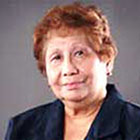To live is to be among men, and to be among men is to struggle, a struggle not only with them but with one's self; with their passions, but also with one's own." – Jose Rizal
TEACHING history could be a rich experience for both of us teachers and learners. We cannot help but remember those phases in the life of our nation — some sad, some exciting — and which have shaped our life and that of past and future generations. With the adoption of the K to 12, some aspects of Philippine history (geography, culture, civics, and the basics of government) are taught in Grades 3 and 4. Philippine history is taught in Grades 5 and 6. Our students would only study Philippine History again seven years later if they take such a course in college. (Google, Jan. 3, 2021). Thus, The Philippine Historical Association (PHA) and other groups are calling for the restoration of Philippine History in the K to 12 Program. Given the present curriculum, where Philippine history has been phased out as such, we need not wait teaching topics from our nation's history while waiting for its restoration in the HS curriculum. We can somehow fill up "the lacking coherence of context and historical events when Philippine History is restored in the HS." Meanwhile, we can patch up some coherence by drawing lessons from the lives of historical figures such as lessons on the more personal life of our national hero Jose Rizal — his death anniversary being today, December 30.
Continue reading with one of these options:
Ad-free access
P 80 per month
(billed annually at P 960)
- Unlimited ad-free access to website articles
- Limited offer: Subscribe today and get digital edition access for free (accessible with up to 3 devices)


